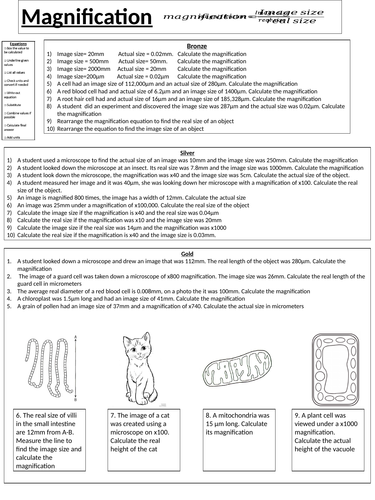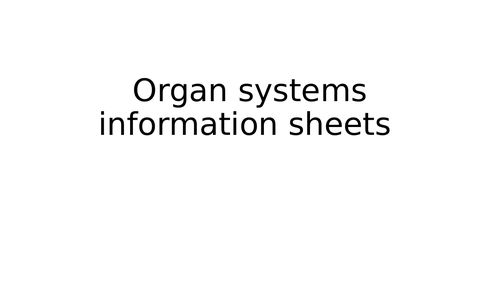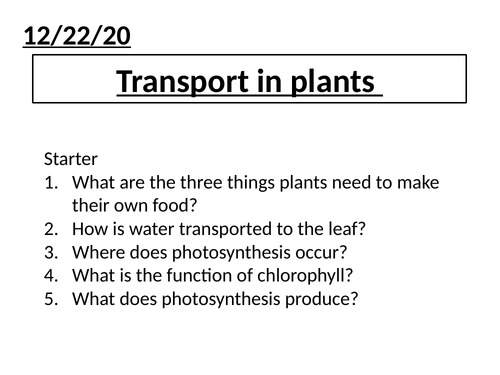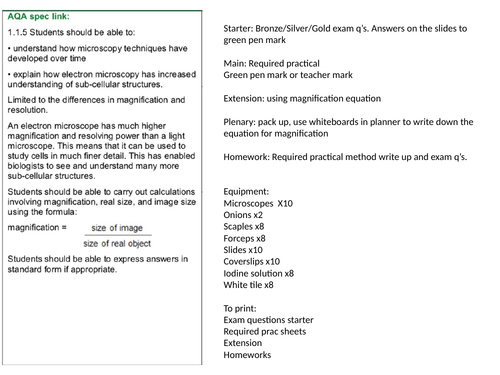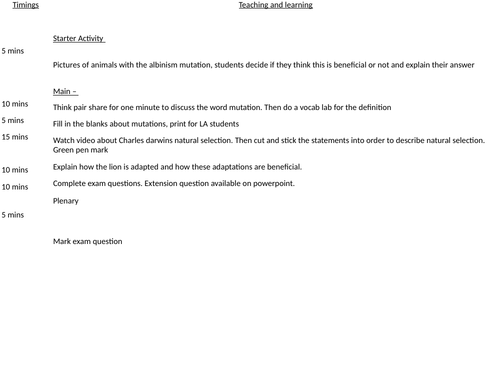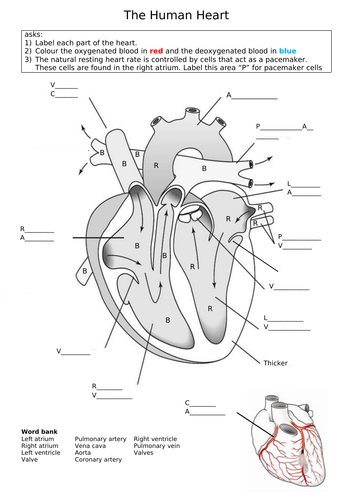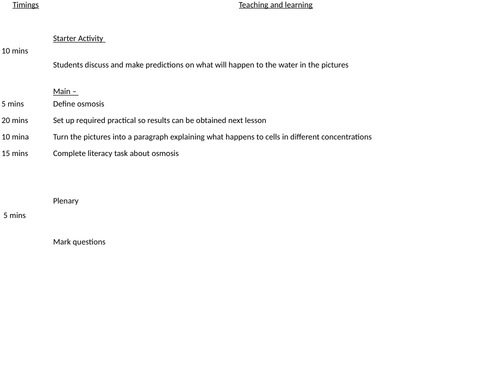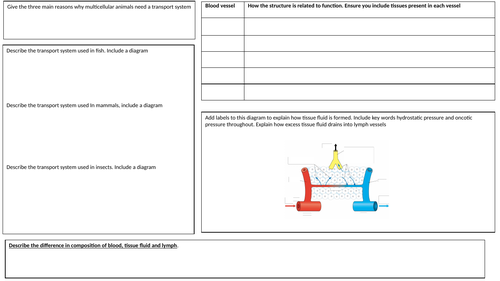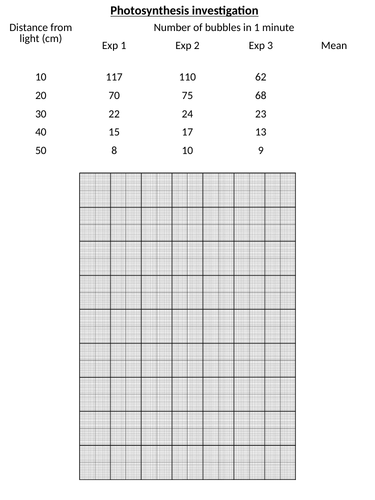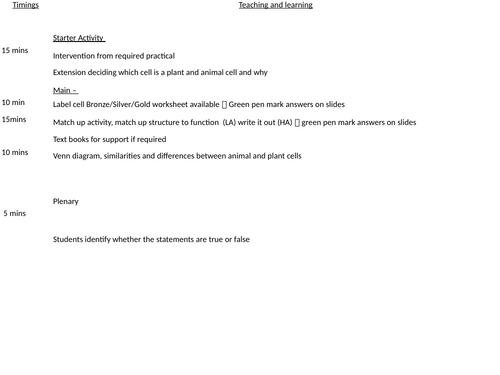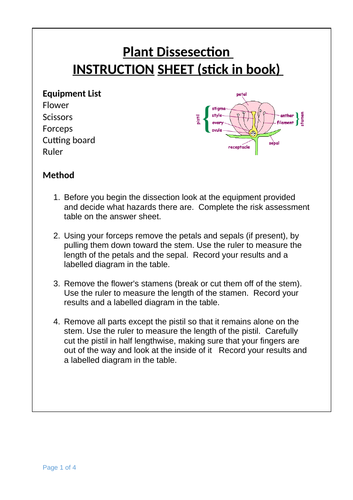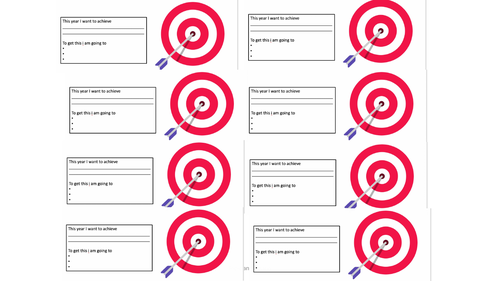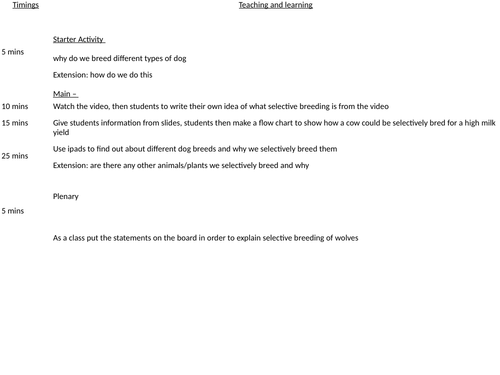
124Uploads
33k+Views
8k+Downloads
Biology

Magnification
Starter: Retrieval starter, based on prior knowledge about animal and plant cells
Main:
explaination of how to convert between common units used in biology
Differentiated task to convert between units
-explaination of how to use standard form
questions to practice on standard form
microscope questions to explain examples
differentiated magnfication worksheet
Plenary:
plenary grid with questions from this lesson and based on animal and plant cells. to be done individually or as a group

Magnification equation worksheet
Differentiated practice using the magnfication equation.
Bronze: very simple, simple put the numbers into the equation
silver: need for rearranging equation
gold: need for rearranging equation and converting between units, and measuring image size from image

Eukaryotic and Prokaryotic cells
Combining both B1.2 and B1.3 from the kerboodle topic
Starter: No goal starter, images of plant and animal cell and a microscope. students can add any information they already know. Images can be printed or a list of what they know can be wrote. To be referred to at the end of the topic, assess prior knowledge
Main:
Label plant and animal cell, differentiated version available, animated answers embedded in the powerpoint
Match structure and function of organelles
Show students bacterial cell, students draw and label their own, before filling in the comparison tick box to compare animal, plant and bacteria cells. Stretch task available
Explain key words prokaryotic and eukaryotic, then students complete the assessed questions showing understanding of differences between these cells. Self assess answer using mark scheme
Plenary
Plenary grid, can be done individually or as teams. Covers key concepts from the lesson, answers on the following slide

Transport in plants KS3
Objectives:
Describe how water is transported in plants
Explain how gases enter and leave plants
explain how some plants are adapted to limit water loss
Potential practical activity of celery with food colouring, not essential for the lesson however.
Starter: Recall questions, answers on the following slide
Main - potential celery practical
discuss the role of the root hair cells, recap students prior knowledge on this
Discuss how water enters a plant, answer questions. Answers on next page
Discuss how gases get in and out of a plant
Discuss adaptations plants have in warm temperatures
Plenary - Exam questions, answers included

Microscopes required practical
Aimed at a mixed ability year 9 class
Starter: Differentiated exam questions answers on the powerpoint to mark
Main: Required practical, worksheet to complete alongside. Answers on the powerpoint to self assess after
Extension: magnification exam questions to practice , answers on the powerpoint
Plenary: Pack up, write equation from memory
Homework sheet: Exam questions on magnification and method to write for the practical

B13.2 Evolution by natural selection
Aimed at a low ability class
Starter Activity
Pictures of animals with the albinism mutation, students decide if they think this is beneficial or not and explain their answer
Main –
Think pair share for one minute to discuss the word mutation. Then do a vocab lab for the definition
Fill in the blanks about mutations, print for LA students
Watch video about Charles darwins natural selection. Then cut and stick the statements into order to describe natural selection. Green pen mark
Explain how the lion is adapted and how these adaptations are beneficial.
Complete exam questions. Extension question available on powerpoint.
Plenary
Mark exam question

B4.3 The heart
Biology Aqa trilogy, B4.3
Aimed at a mixed ability class
Starter: exam question based on previous lesson on blood vessels
Main: 2 minute video to introduce heart
double circulatory task
Then differentiated task on the heart to label
Plenary : exam question on labelling the heart

B1.7 Osmosis
Aimed at a mixed ability year 9 class
Starter: Discuss and make a prediction about where the water willl move
bring it together with a definitoin of osmosis
Main: Set up practical so results can be looked at next lesson - method on slide
go through what happens to cells in different concentrations
differentiated literacy task
Plenary: mark questions

B1.10 exchange materials
Aimed at a mixed ability year 9 class
Starter: reflect on previous diffusion practical
Main: explain surface area:vol, do practic equestions and mark
do research task to explain how surfaces are specialised
extension: checkpoint follow ups from kerboodle
Plenary" tweet what theyve learnt

KS3 Respiratory system and gas exchange
Starter: Simple recall questions based on prior knowledge, easily changed to suit your class
Main:
Information about the respiratory system, then a labelling task, a putting in order task and questions to consolidate learning. All answers on the powerpoint.
Gas exchange information on the ppt also a drawing of how it can be taught under the visulisar, followed by questions to check understaning.
Plenary
True or false

B13.1 variation and evolution
Aimed at a low ability class.
Starter Activity
Stick in objective sheets for this topic. Starter question what makes each person different. Extension task: why do we look different
Main –
Literacy task, focus on the key word variation: write a definition, then write their own sentence using it, then draw a picture to show the key word also
Draw a venn diagram and decide if the variation is genetic, environmental or both. Highlight what genetic means
Go through answers and discuss why students have put it there
Think, pair, share, what similarities and differences would twins have if they were separated at birth
Answer questions about twins using data provided
Plenary
Recap tick grid, which features are due to the environment, genes or both

B16.1 feeding relationships
Aimed at low ability KS4 students, targets of level 3/4
Starter: Differentiated synoptic questions linking to B8 photosynthesis.
Main: match up key words, then link key words to food chain.
differentiated 6 mark question.
Broken down 6 mark question to build confidence, focusing on key words. Bronze/silver supportive sheets Gold students just answer the question.
Plenary: Mark scheme on powerpoint for students to mark and improve their answer.

Photosynthesis KS3
Starter: Recap of a plant cell.
Main - intro to photosynthesis, defintion and explaination
Video with questions to answer
Student task to explain photosynthesis with a clear success criteria given
Discuss how we can measure the rate of photosythesis
Pondweed practical could be done at this point, alternatively there is a online simulation attached.
Give students data, work out the mean, plot a graph write an evaluation. Work sheet for support given with results table and graph.
plenary - recap questions from earlier in the topic

B1.2 Animal and plant cells
Aimed at a mixed ability year 9 class
Starter: identify which cell is a plant cell and which is an animal cell and explain why
Main: Label plant and animal cells differentiated worksheets (bronze silver gold)
Match up strucutre and function of organelles
venn diagram similarities and differences between plant and animal cells
Plenary: true/false questions

B2 - cell division revision foundation
Revision powerpoint with booklet
for foundation students
Booklet contains activities and information for students to complete

Structure of a plant
Aimed at KS3 students.
This lesson recaps KS2 prior knowledge on the structure of a plant. Before moving onto KS3 content about structure and function of parts of the plant, followed by a plant dissection, accompanied by worksheets.

B13.3 selective breeding
Aimed at a low ability class
Starter Activity
why do we breed different types of dog
Extension: how do we do this
Main –
Watch the video, then students to write their own idea of what selective breeding is from the video
Give students information from slides, students then make a flow chart to show how a cow could be selectively bred for a high milk yield
Use ipads to find out about different dog breeds and why we selectively breed them
Extension: are there any other animals/plants we selectively breed and why
Plenary
As a class put the statements on the board in order to explain selective breeding of wolves


